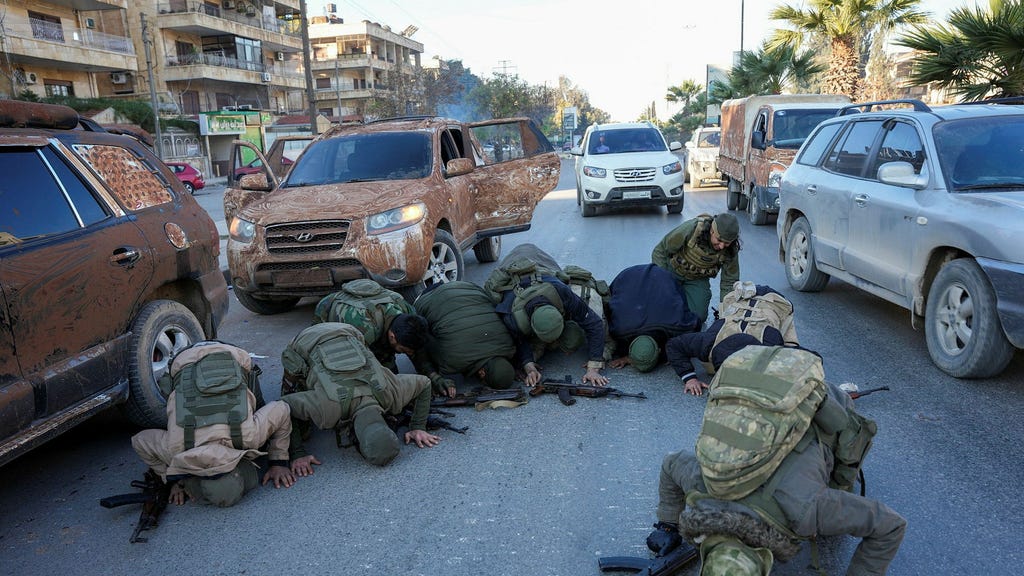The Syrian civil war, a conflict that has ravaged the nation for over a decade, has witnessed a resurgence in violence, escalating along three primary fronts. The regime of President Bashar al-Assad, based in Damascus, faces renewed challenges from hardened jihadist fighters in the key cities of Aleppo, Hama, and Deir al-Zor. This renewed conflict mirrors the surge in violence experienced between 2015 and 2016, a period where the Assad regime, with crucial support from Iran and Russia, managed to suppress the opposition and regain control of significant territories. However, the current situation presents a different dynamic, as the regime now relies heavily on inexperienced, forcibly conscripted soldiers to confront battle-hardened jihadist forces. This reliance on untested troops raises concerns about the regime’s capacity to effectively counter the experienced and determined opposition.
The city of Aleppo, once Syria’s most populous and a significant economic hub, has become a central battleground in this renewed conflict. Having been devastated by years of fighting and bombardment, Aleppo remains a strategically important city, and its control is fiercely contested. The jihadist groups, leveraging their combat experience and strategic prowess, pose a significant threat to the regime’s hold on the city. The inexperienced conscripts deployed by the regime face a daunting challenge in confronting these seasoned fighters, potentially leading to heavy casualties and a protracted struggle for control of Aleppo. The outcome of the battle for Aleppo could significantly influence the overall trajectory of the renewed conflict.
Hama, another strategically located city in western Syria, also faces a renewed wave of violence. This city, with its historical significance and proximity to key transportation routes, has been a focal point of contention throughout the Syrian conflict. The resurgent fighting in Hama further complicates the already complex situation and threatens to destabilize the surrounding region. The regime’s reliance on inexperienced conscripts in Hama, similar to Aleppo, raises serious concerns about its ability to maintain control and prevent the city from falling into the hands of the jihadist groups. The outcome of the battle for Hama will be crucial in determining the balance of power in the western part of the country.
Deir al-Zor, a city located in eastern Syria near the Iraqi border, represents the third front in this escalating conflict. Rich in oil resources, Deir al-Zor holds significant economic importance and has been a key target for various factions throughout the Syrian conflict. The renewed fighting in Deir al-Zor further complicates the already precarious situation in the eastern part of the country, adding another layer of complexity to the multifaceted Syrian conflict. The control of Deir al-Zor and its surrounding oil fields is critical for the warring parties, not only for its economic value but also for the leverage it provides in the overall conflict.
The resurgence of violence in these three key cities underscores the fragility of the relative calm that had prevailed in recent years. The Assad regime, despite its previous successes in suppressing the opposition, now faces a renewed challenge from a determined and experienced enemy. The deployment of inexperienced and forcibly conscripted troops highlights the regime’s potential vulnerabilities and raises questions about its long-term capacity to maintain control. The outcome of these battles will likely have significant implications for the future of Syria and the broader regional stability.
The current escalation of violence in Syria raises significant concerns about the potential for further humanitarian crisis. The renewed fighting threatens to displace more civilians, exacerbate the already dire humanitarian situation, and further destabilize the region. The international community faces a critical challenge in addressing the escalating conflict and mitigating its humanitarian consequences. A concerted effort is needed to find a political solution to the Syrian crisis and prevent further suffering for the Syrian people. The international community must act decisively to address the root causes of the conflict and work towards a lasting peace in Syria. The future of Syria hinges on the collective efforts of the international community to address this complex and protracted conflict.














